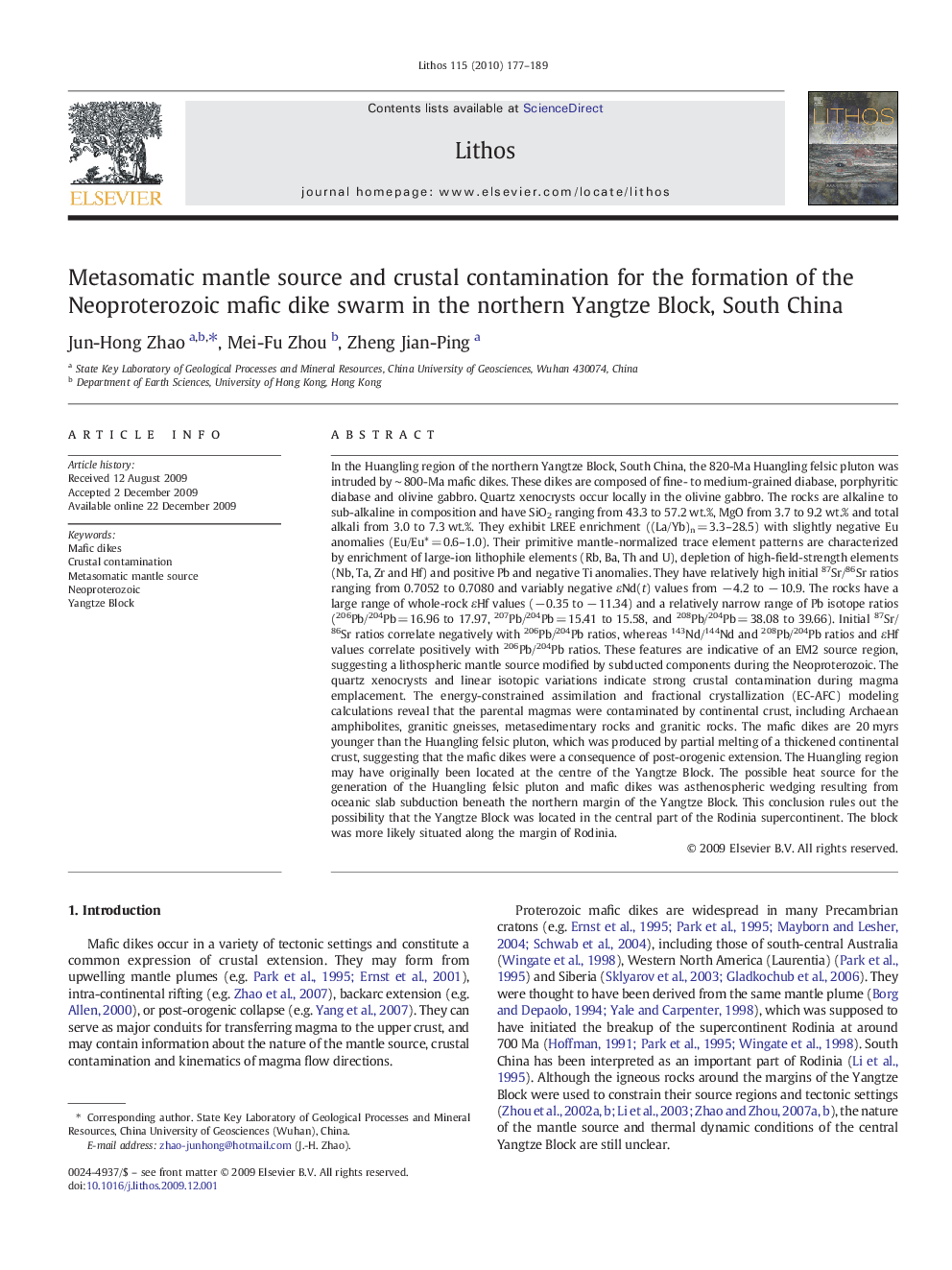| کد مقاله | کد نشریه | سال انتشار | مقاله انگلیسی | نسخه تمام متن |
|---|---|---|---|---|
| 4717038 | 1638735 | 2010 | 13 صفحه PDF | دانلود رایگان |

In the Huangling region of the northern Yangtze Block, South China, the 820-Ma Huangling felsic pluton was intruded by ∼ 800-Ma mafic dikes. These dikes are composed of fine- to medium-grained diabase, porphyritic diabase and olivine gabbro. Quartz xenocrysts occur locally in the olivine gabbro. The rocks are alkaline to sub-alkaline in composition and have SiO2 ranging from 43.3 to 57.2 wt.%, MgO from 3.7 to 9.2 wt.% and total alkali from 3.0 to 7.3 wt.%. They exhibit LREE enrichment ((La/Yb)n = 3.3–28.5) with slightly negative Eu anomalies (Eu/Eu* = 0.6–1.0). Their primitive mantle-normalized trace element patterns are characterized by enrichment of large-ion lithophile elements (Rb, Ba, Th and U), depletion of high-field-strength elements (Nb, Ta, Zr and Hf) and positive Pb and negative Ti anomalies. They have relatively high initial 87Sr/86Sr ratios ranging from 0.7052 to 0.7080 and variably negative εNd(t) values from − 4.2 to − 10.9. The rocks have a large range of whole-rock εHf values (− 0.35 to − 11.34) and a relatively narrow range of Pb isotope ratios (206Pb/204Pb = 16.96 to 17.97, 207Pb/204Pb = 15.41 to 15.58, and 208Pb/204Pb = 38.08 to 39.66). Initial 87Sr/86Sr ratios correlate negatively with 206Pb/204Pb ratios, whereas 143Nd/144Nd and 208Pb/204Pb ratios and εHf values correlate positively with 206Pb/204Pb ratios. These features are indicative of an EM2 source region, suggesting a lithospheric mantle source modified by subducted components during the Neoproterozoic. The quartz xenocrysts and linear isotopic variations indicate strong crustal contamination during magma emplacement. The energy-constrained assimilation and fractional crystallization (EC-AFC) modeling calculations reveal that the parental magmas were contaminated by continental crust, including Archaean amphibolites, granitic gneisses, metasedimentary rocks and granitic rocks. The mafic dikes are 20 myrs younger than the Huangling felsic pluton, which was produced by partial melting of a thickened continental crust, suggesting that the mafic dikes were a consequence of post-orogenic extension. The Huangling region may have originally been located at the centre of the Yangtze Block. The possible heat source for the generation of the Huangling felsic pluton and mafic dikes was asthenospheric wedging resulting from oceanic slab subduction beneath the northern margin of the Yangtze Block. This conclusion rules out the possibility that the Yangtze Block was located in the central part of the Rodinia supercontinent. The block was more likely situated along the margin of Rodinia.
Journal: Lithos - Volume 115, Issues 1–4, March 2010, Pages 177–189